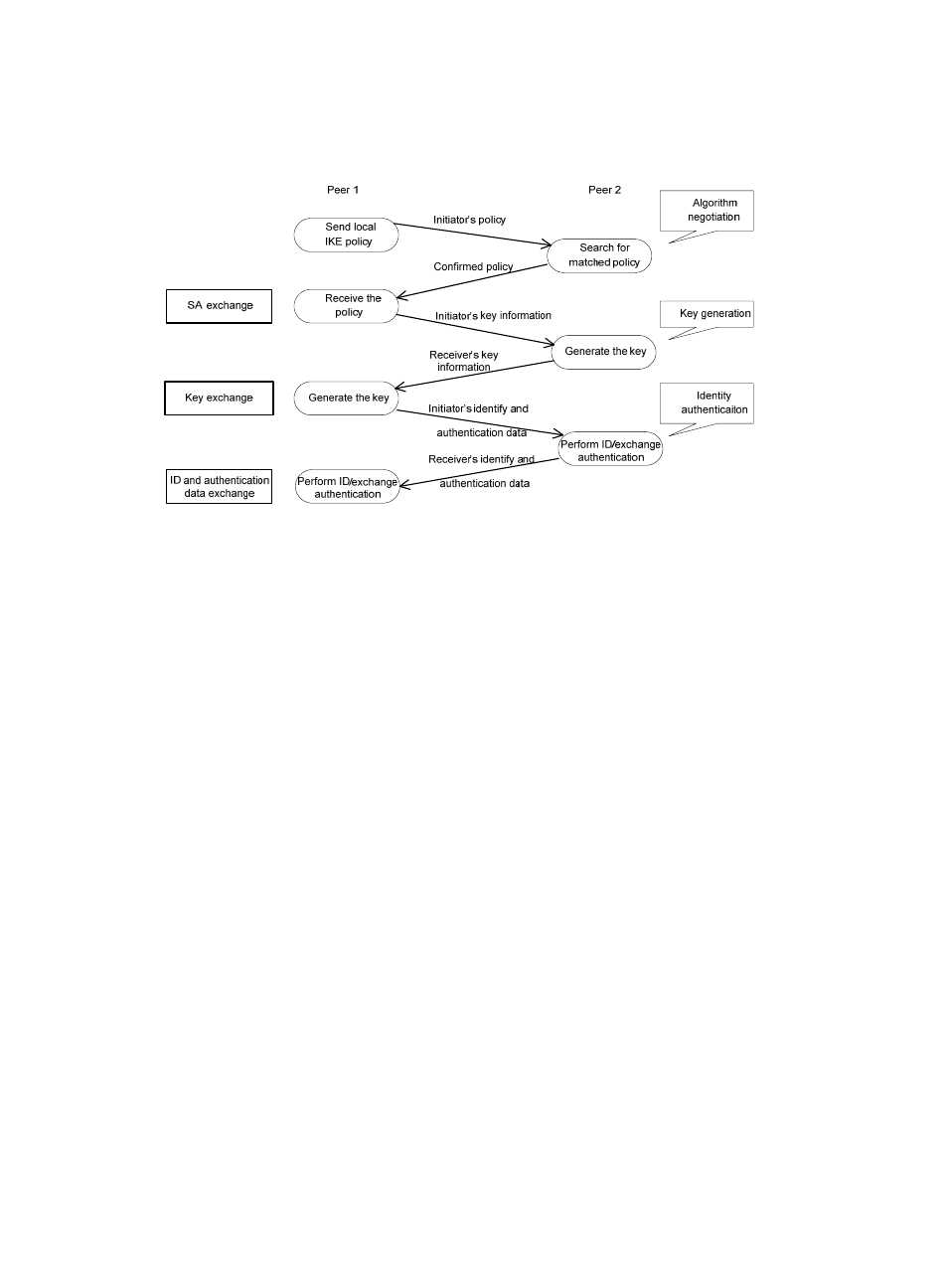Functions of ike in ipsec – H3C Technologies H3C WX3000E Series Wireless Switches User Manual
Page 845

824
2.
Phase 2—Using the ISAKMP SA established in phase 1, the two peers negotiate to establish IPsec
SAs.
Figure 878 IKE exchange process in main mode
As shown in
, the main mode of IKE negotiation in phase 1 involves three pairs of messages:
•
SA exchange—Used for negotiating the security policy.
•
Key exchange—Used for exchanging the Diffie-Hellman public value and other values like the
random number. Key data is generated in this stage.
•
ID and authentication data exchange—Used for authentication of identity and exchanged data in
phase 1.
The main difference between main mode and aggressive mode is that aggressive mode does not provide
identity protection and only exchanges the above three messages. Aggressive mode exchanges less
information and features higher negotiation speed. It applies to scenarios where the requirement for
identity protection is lower. For scenarios with higher requirement for identity protection, use the main
mode.
Functions of IKE in IPsec
IKE provides the following functions for IPsec:
•
Automatically negotiates IPsec parameters such as the keys, reducing the manual configuration
complexity.
•
Performs DH exchange whenever establishing an SA, making sure each SA has a key independent
of any other keys.
•
Automatically negotiates SAs when the sequence number in the AH or ESP header overflows,
ensuring that IPsec provides the anti-replay service normally by using the sequence number.
•
Provides end-to-end dynamic authentication.
•
Identity authentication and management of peers influence IPsec deployment. A large-scale IPsec
deployment needs the support of CAs or other institutes that manage identity data centrally.